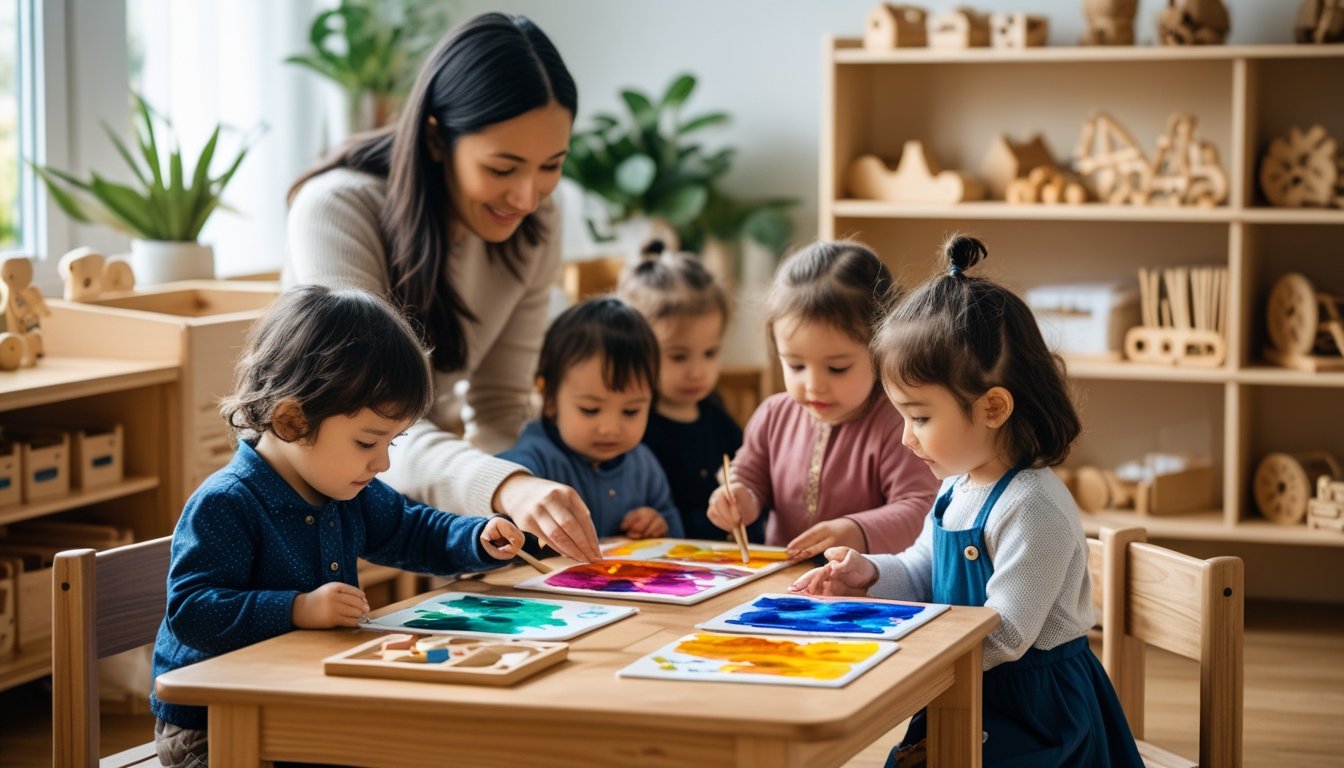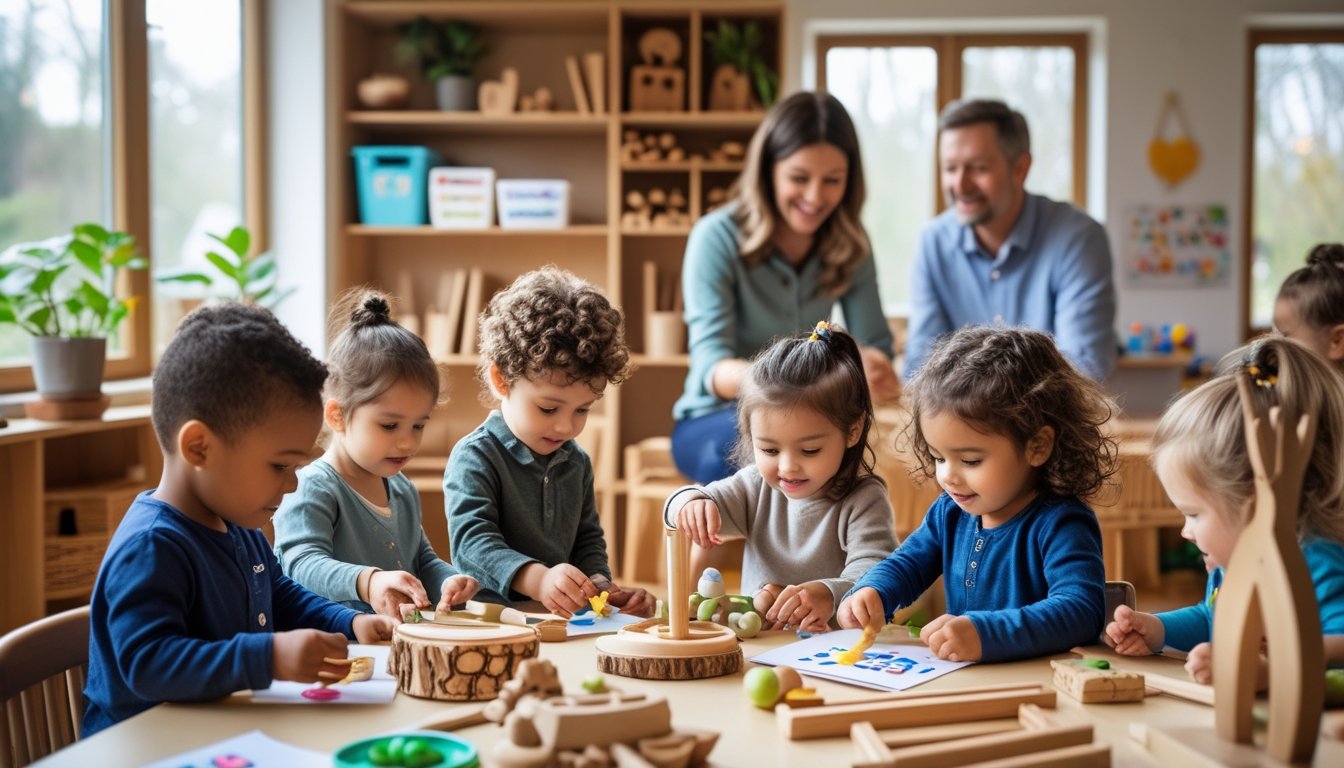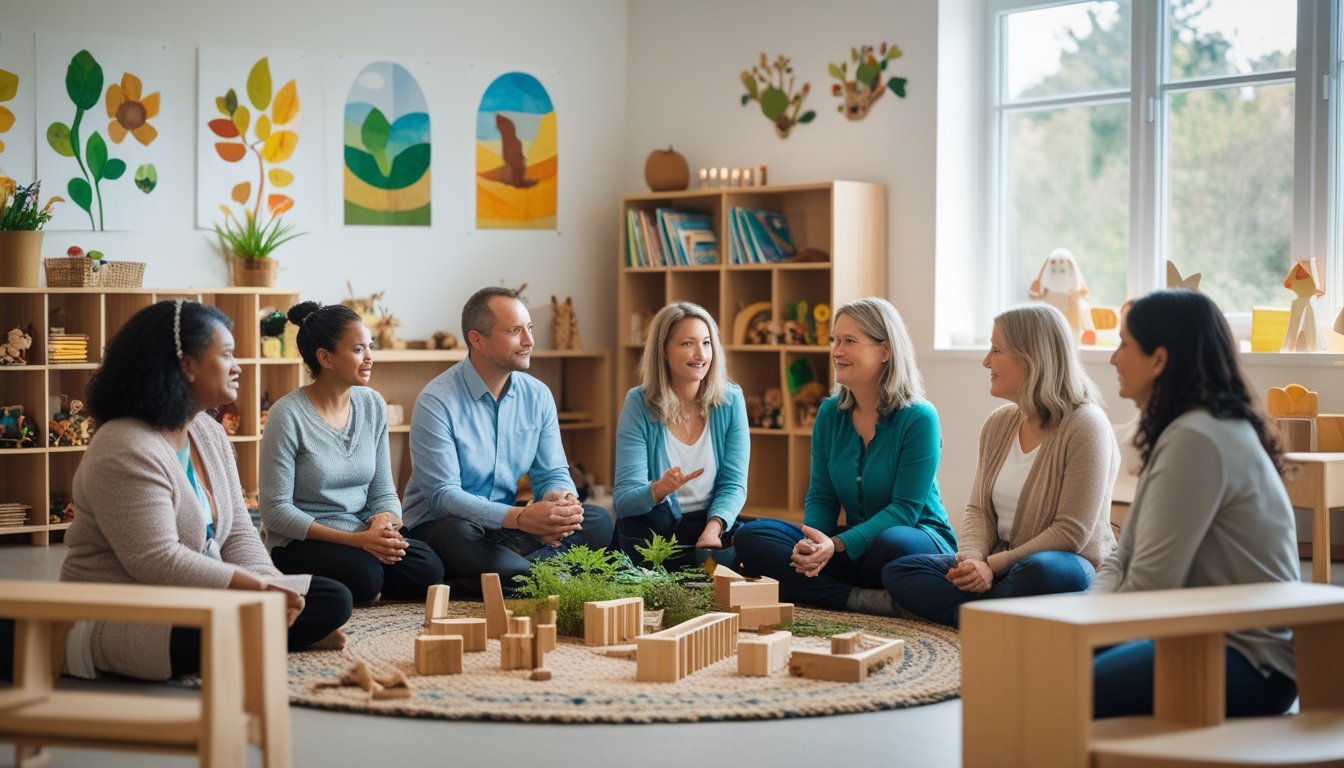Late updated: 09 Jun 2025 10:06
Written by:
Understanding Waldorf Education A Parent's Guide: Key Insights and Benefits
Understanding Waldorf Education can sometimes feel overwhelming for parents new to this alternative educational approach. Waldorf Education fosters a holistic development in children by intertwining intellectual, artistic, and practical elements into the learning experience. By focusing on these aspects, parents can navigate the unique structure and philosophy of Waldorf with greater ease.

The core principles of Waldorf Education are deeply rooted in nurturing a child’s imagination and creativity while promoting academic achievements. This educational model prioritises the emotional and social growth of children alongside their cognitive skills. Parents are strongly encouraged to stay involved, partnering with teachers to reinforce these values outside the classroom.
By embracing the Waldorf approach, families can witness children flourishing through engaging curriculums that adapt to their developmental stages. Exploring frequently asked questions helps demystify common misconceptions and offers clarity on how Waldorf Education uniquely tailors educational experiences.
Key Takeaways
- Holistic development combines intellectual and artistic learning.
- Social and emotional growth is as important as academic milestones.
- Parents play a critical role in reinforcing educational values.
Principles and Foundations of Waldorf Education
Waldorf education, inspired by the work of Rudolf Steiner, emphasises a deep-rooted philosophical approach. It combines aspects of anthroposophy, creating a holistic educational experience focused on human development. This section will explore the origins, philosophy, and unique methods of the Waldorf approach.
Rudolf Steiner and the Origins of the Waldorf Method
Rudolf Steiner, an Austrian philosopher, laid the groundwork for Waldorf education in the early 20th century. He collaborated with Emil Molt, the owner of the Waldorf-Astoria cigarette factory, to establish the first Waldorf school in Stuttgart, Germany. Steiner's ideas were revolutionary, incorporating concepts such as reincarnation and karma into everyday teaching practices.
Our approach places great value on the development of intellectual, emotional, and moral capacities. Teachers are seen not just as instructors but as guides. They focus on nurturing a child’s innate abilities and fostering connections with the world around them. This makes Waldorf education distinct and immersive, embracing spiritual awareness alongside conventional learning methods.
Philosophy and Anthroposophy in Educational Practice
The cornerstone of our educational approach is Steiner's philosophy known as Anthroposophy. This worldview encourages us to look beyond the physical, exploring the spiritual dimensions of human existence. Waldorf education applies these principles by fostering imagination, creativity, and independent thinking in students.
In our classrooms, narrative storytelling and artistic activities are crucial tools. They allow children to engage with complex ideas in a tangible way. Rather than focusing solely on rote memorisation, we prioritise experiences that enrich a child's understanding. This is achieved through arts, music, and crafts, creating a rich tapestry that forms the basis of a lifelong love for learning.
Holistic Approach to Human Development
Our holistic approach is characterised by an understanding of human development as a series of seven-year cycles. Each stage comes with its own developmental milestones and learning styles. This model is designed to align educational practices with the natural rhythms of a child's growth.
During early childhood, emphasis is placed on play and imitation. As children mature, the focus shifts to inspiring independent thought and ethical responsibility. This comprehensive framework not only advances academic skills but also nurtures social and emotional intelligence. By aligning education with these natural stages, we support well-rounded development that extends beyond traditional benchmarks.
Curriculum, Classroom Experience, and Parent Involvement

In Waldorf education, the curriculum is holistic, aiming to cultivate not only academic success but also creative thinking and emotional intelligence. The classroom environment prioritises imaginative play and mindfulness, while parents and the community actively participate in the educational journey.
Structure and Content of the Waldorf Curriculum
The Waldorf curriculum is uniquely tailored to address the developmental stages of childhood. Early education focuses on imaginative play and the use of natural materials to stimulate sensory experiences. Lower grades integrate storytelling, music, and artistic activities to encourage learning. In adolescence, the curriculum shifts to more structured academics, with inquiry-based science education and the introduction of complex subjects such as mathematics and history. The aim is not merely academic achievement but fostering well-rounded, lifelong learners equipped with practical skills and emotional intelligence.
Classroom Environment and Teaching Methods
Waldorf classrooms are characterised by their warm and inviting atmospheres, rich in sensory experiences. Teachers employ a variety of teaching methods that emphasise storytelling, creative arts, and movement to facilitate learning. Lessons are designed to be rhythmical, engaging students in activities like speaking and listening to promote social and communication skills. The use of natural materials, such as wood and wool, encourages connection with the environment and promotes mindfulness. This method avoids early academic pressure, choosing instead to develop a base for holistic education.
Role of Parents and Community
In Waldorf schools, parents play an integral role in the educational environment. Parental involvement is encouraged through school activities, volunteering in classrooms, and participating in community festivals. This strengthens the bond between home and school. The community-centered approach fosters a collective spirit, making education a shared responsibility. Resources are often pooled together, allowing the community to support the holistic development of every child. This involvement enriches not just the child's experience, but also strengthens community ties, affirming the bond between educators and families.
Comparisons with Other Educational Approaches
When compared to educational approaches like the Montessori method or public schools, the Waldorf method stands out in its emphasis on imaginative play and creative education. Montessori schools might place a greater focus on individual learning pathways, whereas Waldorf encourages group activities and social learning. Public schools, often more structured, may not offer the same level of parent and community involvement. Both Montessori and Waldorf schools value early childhood education, but Waldorf uniquely integrates emotional intelligence and creative thinking as central components. This holistic approach appeals to families seeking a more connected and community-focused educational experience.
Frequently Asked Questions

Parents often wonder about the core principles, instructional methods, artistic integration, and unique philosophical foundations of Waldorf education. This section addresses key questions that highlight its distinctive approach.
What are the principal tenets of Waldorf education?
Waldorf education centres around the holistic development of children, addressing their intellectual, emotional, and physical needs. This method fosters curiosity and creativity while supporting critical thinking skills. The philosophy emphasises experiential learning and the nurturing of students' innate talents and abilities.
How does the main lesson structure function in Waldorf schools?
The main lesson, a cornerstone of Waldorf schooling, typically spans two hours each morning. During this period, teachers present core subjects through an immersive block that can last from three to six weeks. This approach ensures depth and continuity in learning, engaging students in a concentrated study of each subject area.
On what philosophical foundations is Waldorf education built?
Waldorf education is based on anthroposophy, a philosophy introduced by Rudolf Steiner. It promotes a developmental approach that respects children’s unfolding nature. Steiner's ideas advocate for viewing education as a path of self-discovery and growth, encouraging students to connect deeply with themselves and the world around them.
How do the arts integrate into the Waldorf curriculum?
Incorporation of the arts is fundamental in Waldorf schools, where subjects like music, drama, and fine arts are woven into daily lessons. This integration enhances creativity and emotional intelligence. By engaging with artistic activities, students explore diverse means of expression, complementing their academic pursuits with imaginative experiences.
What distinguishes Waldorf education from mainstream schooling approaches?
Waldorf schools prioritise development over rote learning, focusing on cultivating individual talents. Unlike traditional schools, there's less emphasis on standardised testing. Their curriculum adapts to children's developmental stages, fostering a love for learning through creative and experiential education methods.
In what ways can parents support their child's Waldorf educational journey?
Parents can engage in activities that mirror the school's values, such as encouraging outdoor play and creative pursuits at home. Supporting the rhythm and routine established at school is vital. Collaborative communication with teachers and participation in school events can foster a supportive community for their child’s education.
